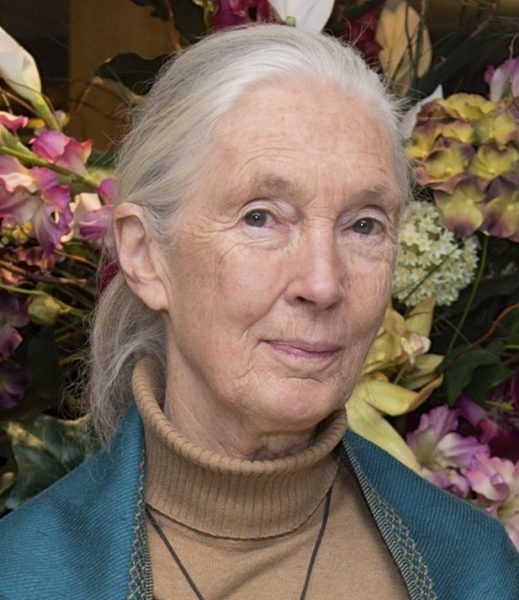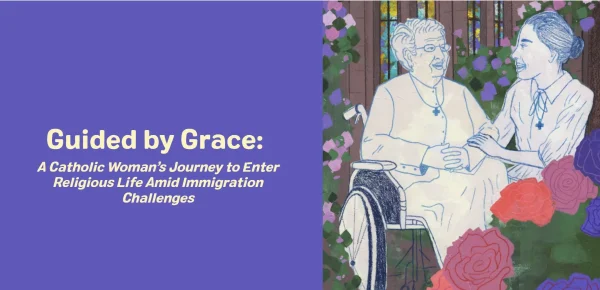In Case You Missed It: This article is from our April 2010 edition of our newsletter “Free-Range Thinking.” It’s the beginning of an answer to the “This is the age of TikTok! What if I don’t have the space/time to tell a story?” conundrum.
When you don’t have much time (in a presentation) or room (in a letter) you can still tell enough of a story to make a real connection with your audience.

Jane Goodall in 2015
A few years ago, Dr. Jane Goodall came to Los Angeles to meet with film, television and commercial producers who were using chimpanzees as actors. Dr. Goodall had assembled indisputable evidence that these chimpanzees were being cruelly beaten by trainers to make them “more compliant” performers. She had come to Hollywood to plead with the producers to help end the abuse.
Nearly 200 members of the creative community attended Dr. Goodall’s briefing, and each received a 25-page report documenting the abuses. Given the notoriously short attention span of Hollywood types, Dr. Goodall didn’t expect her audience to read every word, but she was hopeful they’d open the booklet and at least read the introduction on the inside cover. It was deliberately brief – less than 250 words – but it still packed an emotional punch:

Photo by Jesús Esteban San José
In the late 1960s, Washoe, a female chimpanzee, was taught American Sign Language under the care of Drs. Allen and Beatrix Gardner. The Gardners hired a young researcher named Roger Fouts to work closely with Washoe, and Fouts would later write about his remarkable experience in the book, Next of Kin: What Chimpanzees Have Taught Me About Who We Are.
In the following excerpt, Fouts describes an incident involving Washoe and a volunteer researcher named Kat. Capitalized words and phrases are used to indicate the signs exchanged by Washoe and her human friends.
“In the summer of 1982, Kat was newly pregnant, and Washoe doted over her belly, asking about her BABY. Unfortunately, Kat had a miscarriage, and she didn’t come in to the lab for several days. When she finally came back, Washoe greeted her warmly but then moved away and let Kat know she was upset that she’d been gone. Knowing that Washoe had lost two of her own children, Kat decided to tell the truth. MY BABY DIED Kat signed to her. Washoe looked down to the ground. Then she looked into Kat’s eyes and signed CRY, touching her cheek just below her eye. When Kat had to leave that day, Washoe wouldn’t let her go. PLEASE PERSON HUG she signed.”
This report is dedicated to Washoe and all great apes who, for better or worse, are now reliant on their human cousins for protection and survival.
The third paragraph of the introduction is an excellent example of a “connecting narrative moment,” a term coined by Frank Dickerson (a fundraising expert profiled in our September 2009 issue). In just a few sentences, you are pulled into a scene featuring two characters. You witness an exchange revealing the humanity in the character you wouldn’t have identified as human, and when Washoe signs, PLEASE PERSON HUG, you simply have to feel something.
The paragraph is not a full-fledged story, but it has enough of a narrative thread to engage us, and it stands as a reminder that even when we think there isn’t enough room, we can still tap into the power of storytelling.
On the web, everyone reads content like a Hollywood executive, so if you’re going to tell a story, keep it brief.
(Note: In the original version of this newsletter, we gave an example of a story from The United Ways of California. However, that story and those links have expired. We’ve included a new example below from our friends at CLINIC.)

Illustration by Michelle Garcia at historiapersonal.com
The Catholic Legal Immigration Network (CLINIC) demonstrates this nicely in the “Our Stories” section of their “Neighbors not Strangers” project. On their project website they have a mini-story of a Catholic woman named Tabu from South Asia. An engaging teaser to Tabu’s story appears in a single paragraph of only 53 words, accompanied by an beautiful graphic of two women in a flower garden (see graphic on left). These 53 words contain a description of our protagonist (Tabu), a beginning (feeling a call from God), middle (forced to leave the country), and unresolved conclusion, priming the mind with curiosity. If the initial mini-story sparked the reader’s interest, Tabu’s full story is one simple click away. A bright orange button with white text saying “Read the Story” sits just below this initial narrative. Several stories are set up in this way on the “Neighbors Not Strangers” website where, in just a few words, the storytellers at CLINIC engage their readers to dive deeper and discover the full story.
”In a complex environment,” writes Annette Simmons in The Story Factor, “people listen to whomever makes the most sense – whomever tells the best story.” Our environment is getting more complex every day, and the time we have to listen (or read) seems to be getting shorter by the minute. So take advantage of every opportunity you have by telling a story, or as much of a story as you can. More often than not, even a little narrative is better than none.